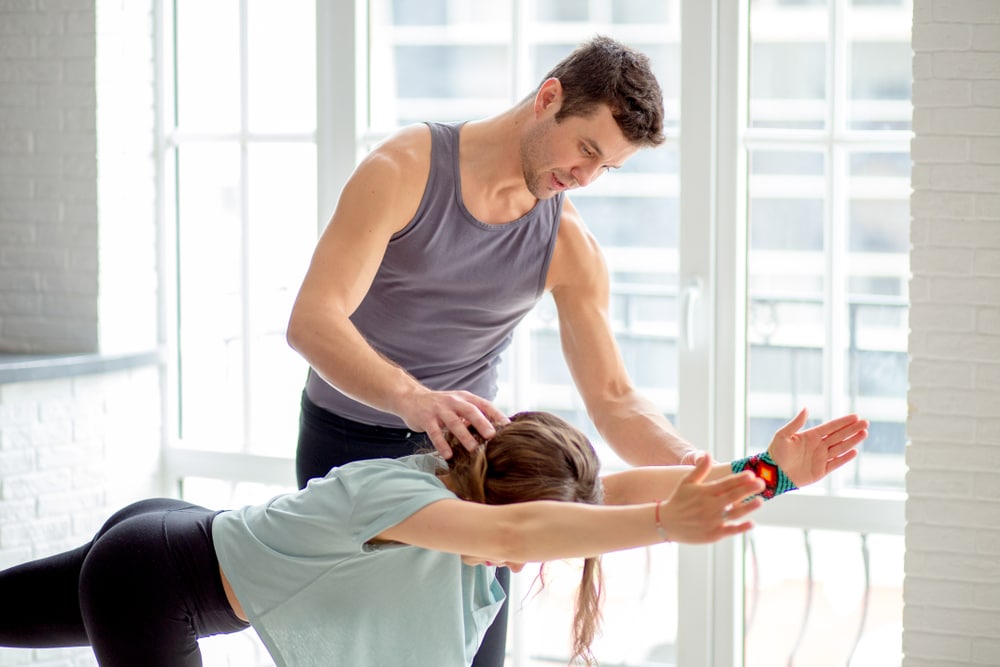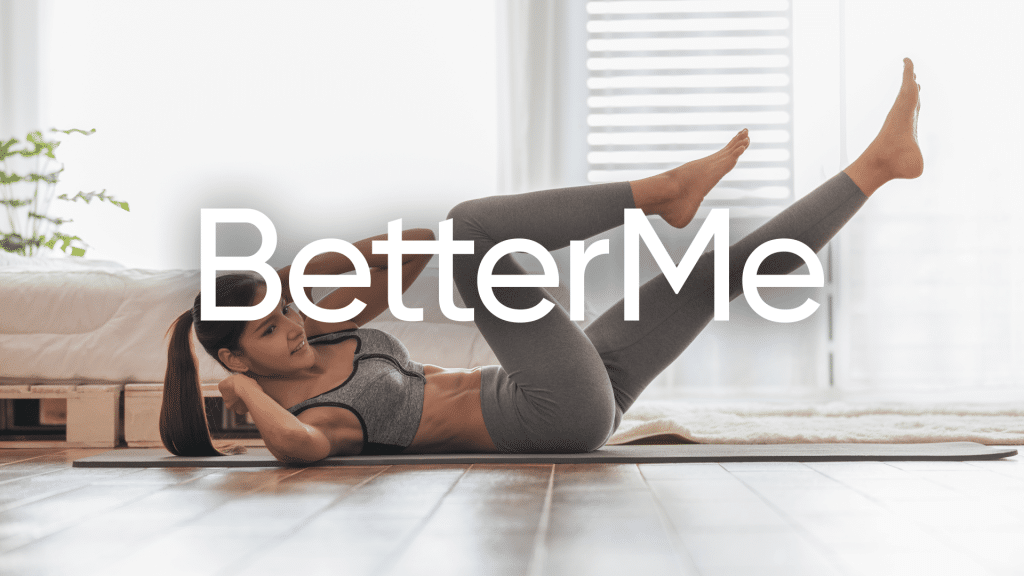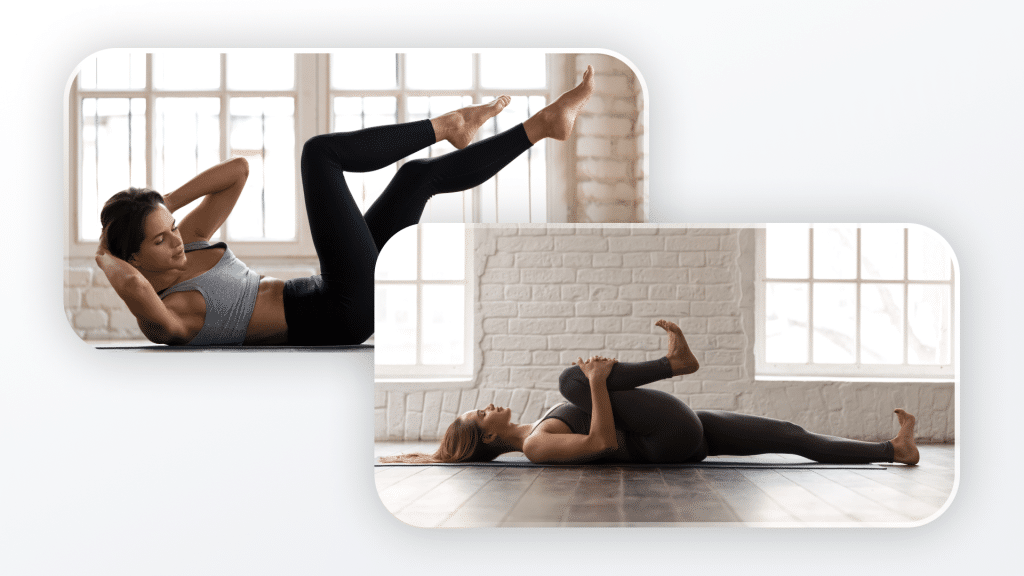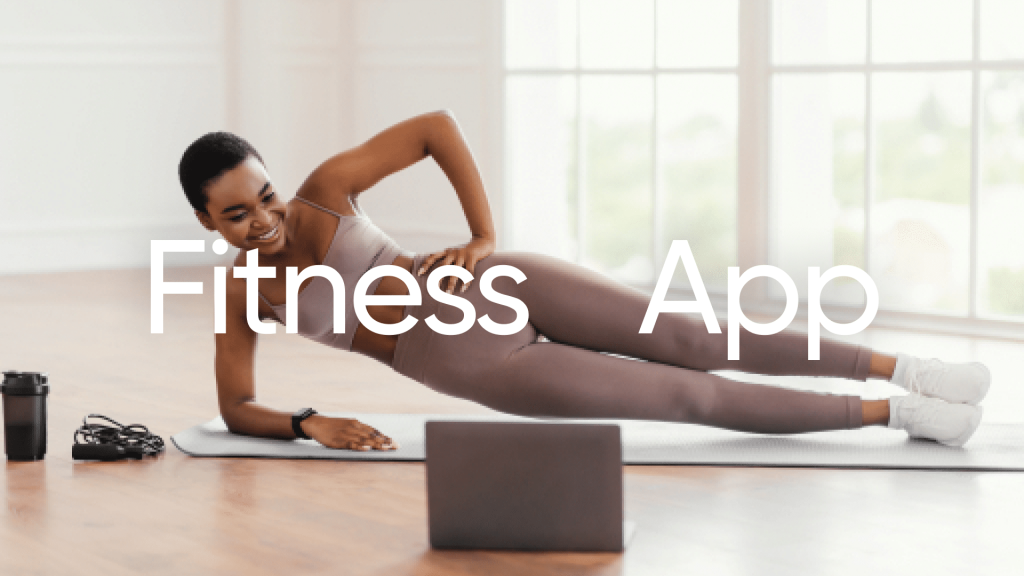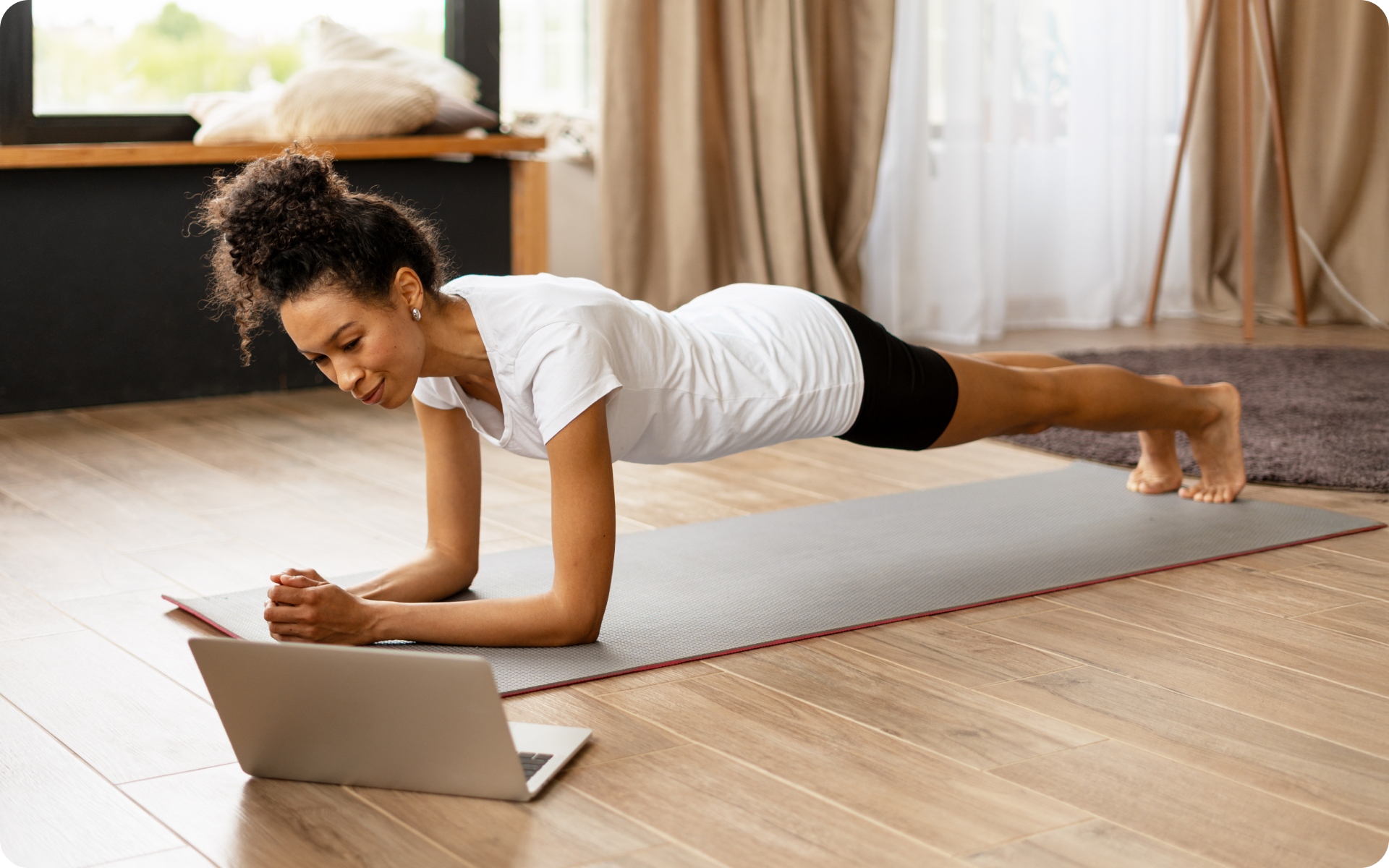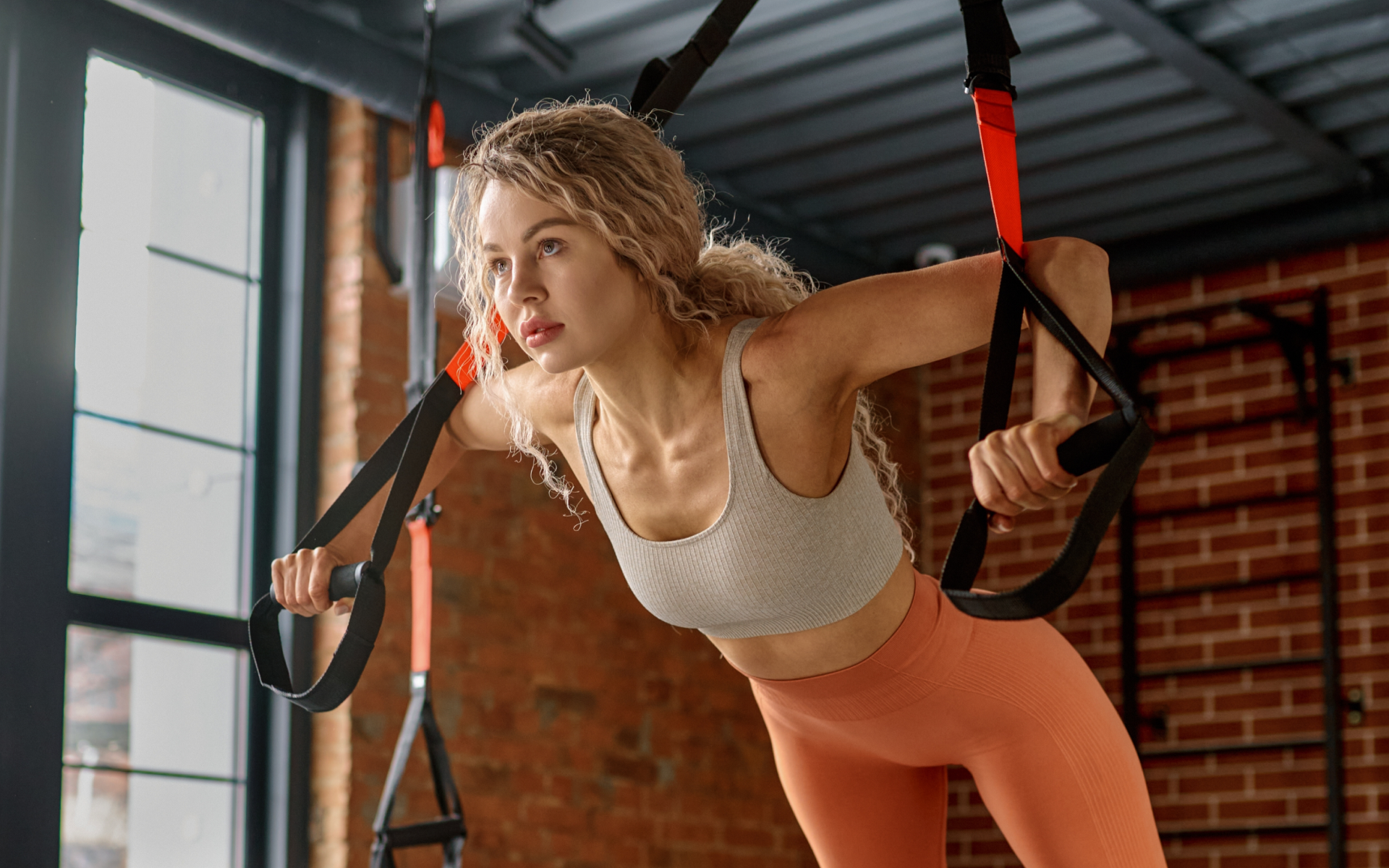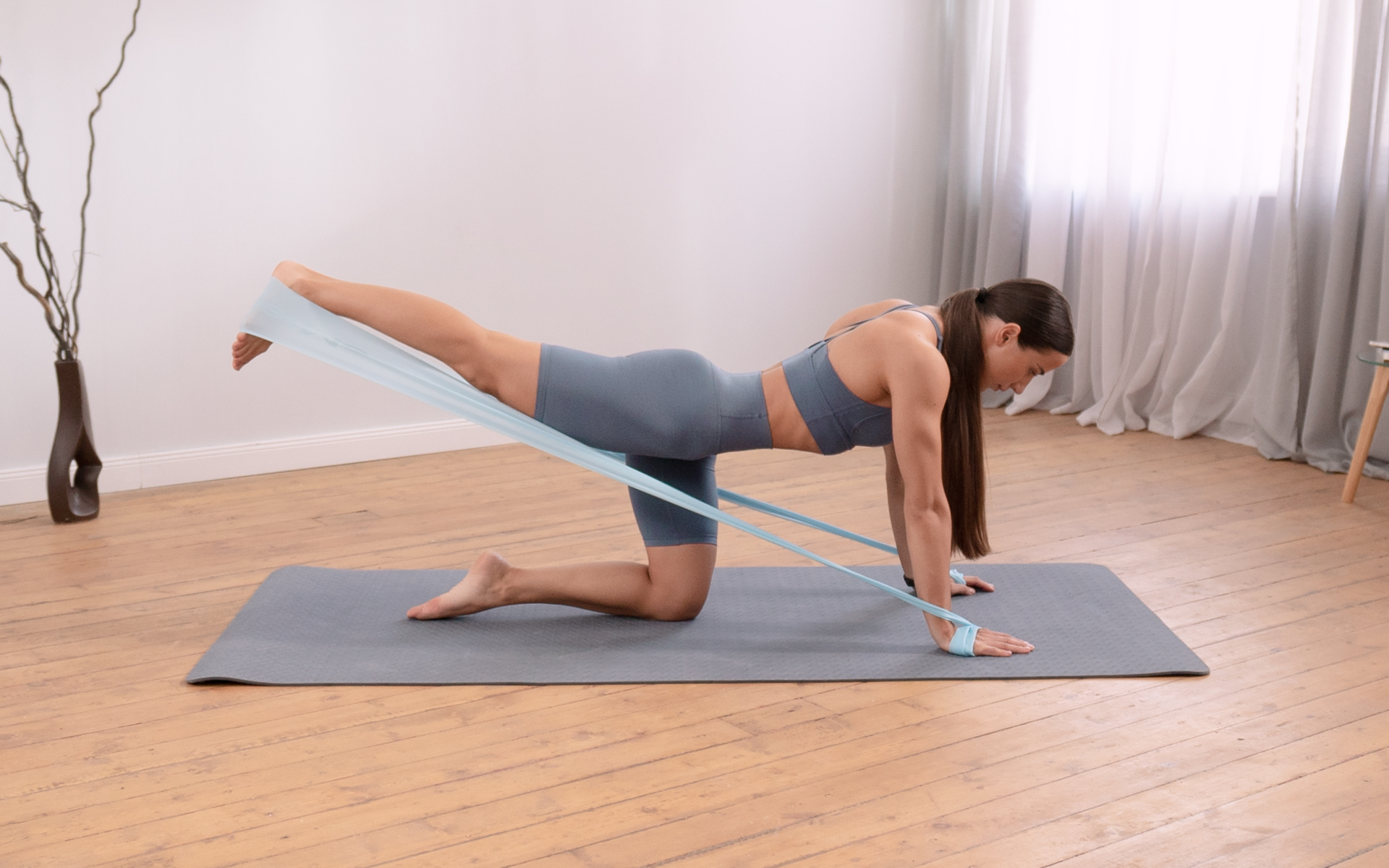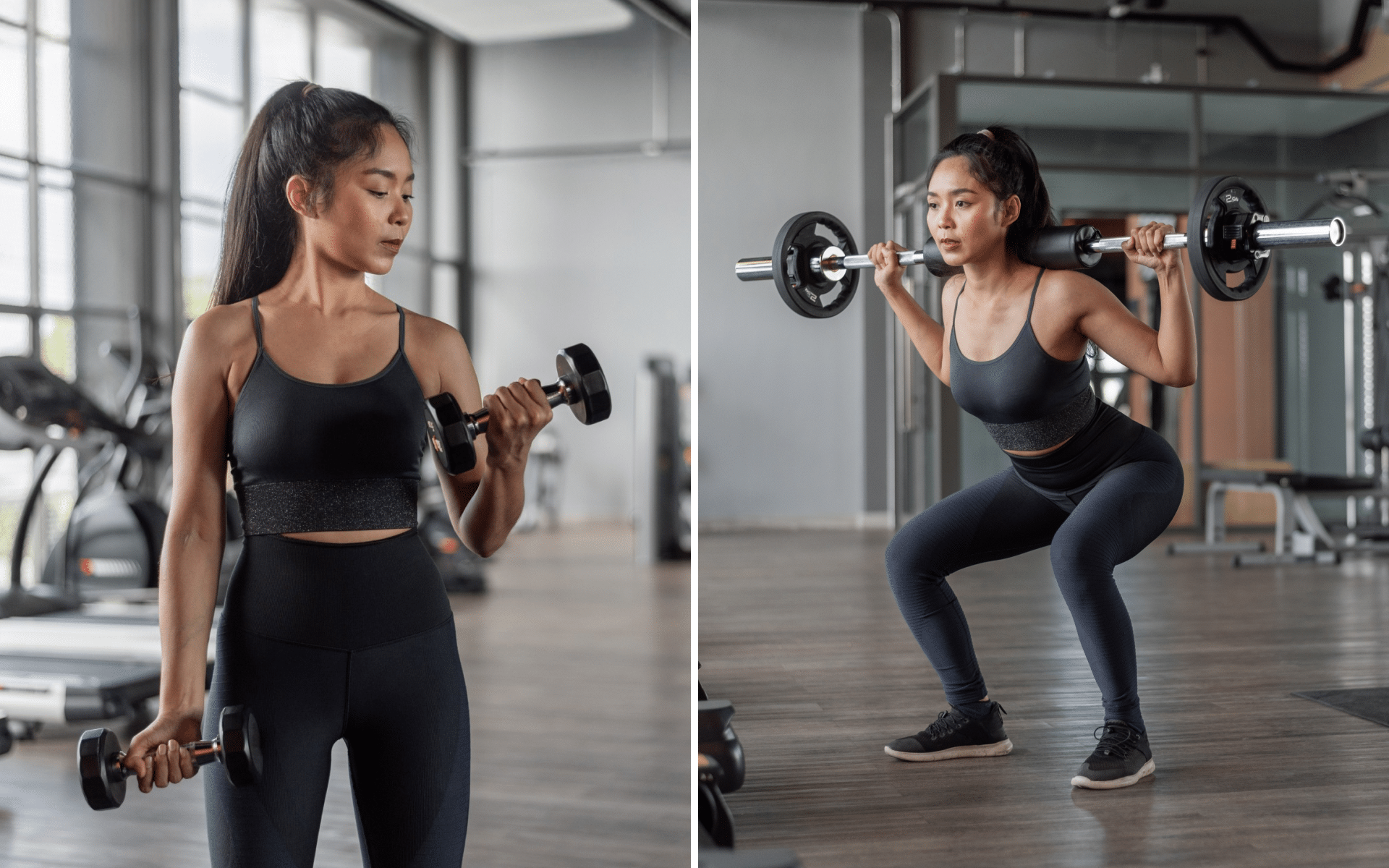Poor posture, balance, and body coordination are all common problems that can lead to pain and injury. Fortunately, corrective exercise can help improve these issues and prevent pain from occurring (4). Corrective exercise is a type of physical therapy that is used to improve posture, balance, and coordination. It is often recommended for people who have experienced pain or injuries, or who have poor body mechanics (3). In this article, we will discuss the benefits of corrective exercise, and we will provide a few examples of exercises that can be used to improve posture, balance, and coordination.
Get your personalized
meal plan!
What Is Corrective Exercise?
Our bodies are constantly adapting to our environment and the activities we do. Over time, this can lead to movement patterns that are inefficient and can cause pain or injuries.
Corrective exercise is a type of exercise that is designed to correct these movement patterns and improve overall function.
Office workers, for example, often have tight hip flexors from sitting in a chair all day. Corrective exercise can help to stretch these muscles and restore normal movement patterns.
Those who lift weights regularly may develop muscle imbalances due to overuse. Corrective exercises can help to correct these imbalances and improve performance.
Standing for long hours can cause people to develop tightness in their hip and back muscles. Corrective exercises can help to stretch these muscles and improve posture (3).
Aging is also a common cause of movement patterns that are inefficient and can lead to pain or injuries. Corrective exercises can help to improve balance, coordination, and stability as we age (3).
Read More: Best Back Workouts With Dumbbells You Can Do Anywhere
What Are The Benefits Of Corrective Exercise Training?
There are several reasons why corrective exercise is important. Some of the benefits include:
Improved Posture
Your posture is the way you hold your body when you are standing or sitting. Poor posture can cause pain in the neck, back, and shoulders. It can also lead to breathing problems and fatigue (9).
Corrective exercise can help improve your posture by stretching tight muscles and strengthening weak muscles. This can help to restore normal movement patterns and improve overall function (3).
Improved Balance
Balance is the ability to maintain your equilibrium while standing or moving. Poor balance can lead to falls and injuries.
Corrective exercise can help improve your balance by strengthening your muscles and improving your coordination. This can help you remain stable while standing or moving, and it can help prevent falls and injuries (3).
Improved Coordination
Coordination is the ability to use your muscles together correctly. Poor coordination can cause you to move clumsily and can lead to falls and injuries.
Corrective exercise can help improve your coordination by strengthening your muscles and improving your sense of balance. This can help you move more smoothly and efficiently, and it can help prevent falls and injuries (11).
Reduced Pain And Injuries
Underusing or overusing certain muscles can lead to pain and injuries. Corrective exercise can help to restore normal movement patterns and reduce the risk of pain and injuries (3).
Improved Function And Performance
Having a good range of motion, strong muscles, and good coordination can help you move more efficiently and perform better at your sport or activity. Corrective exercise can help to improve all of these things, which can help you to perform your best (3).
This is especially important for athletes and those who are active. Corrective exercise can help you move more efficiently and with less pain, which can improve your performance and help you stay injury-free.
If you tend to let yourself off the hook, raise the white flag when things get tougher than you expected, send yourself on an unconscious binge-eating trip – BetterMe app is here to help you leave all of these sabotaging habits in the past!
Increased Flexibility
All your joints should have a good range of motion. When one or more joints have a limited range of motion, it is called joint restriction. Joint restrictions can cause pain and limit your ability to move freely.
Corrective exercise can help to improve your range of motion by stretching tight muscles and loosening up stiff joints. This can help you move more easily and without pain (3).
Increased Muscle Activation
Muscle activation is the ability of your muscles to produce force. Poor muscle activation can result in weakness and poor performance.
Corrective exercise can help improve muscle activation by strengthening your muscles and teaching them how to work together correctly. This should help you move more efficiently and perform better at your sport or activity (11).
Increases Ability To Recover From Injuries
When you are injured, your body goes into a state of repair. During this time, your muscles may become weakened and stiff. This may prolong the healing process and lead to chronic pain.
Corrective exercise can help to improve your ability to recover from injuries by strengthening your muscles and restoring normal movement patterns. This could help you heal more quickly and reduce the risk of chronic pain (12).
Improved Quality Of Life
Having good posture, balance, coordination, and flexibility may help you feel more confident and comfortable in your own body. It can also help you live independently and do the things you enjoy without pain or difficulty.
Read More: Quarantine Workout Challenge To Get Back In Shape In No Time
What Is The Corrective Exercise Continuum (CEX) ?
According to the National Academy of Sports Medicine, the corrective exercise continuum is a system that helps you determine the best type of corrective exercise for your needs (1).
It comprises four phases (1):
- Phase 1: Inhibit
- Phase 2: Lengthen
- Phase 3: Activate
- Phase 4: Integrate
Each phase is designed to address a different aspect of your physical health and function. Inhibitory exercises help to reduce muscle tension and inflammation while lengthening exercises help to improve flexibility and range of motion.
Activation exercises help to improve muscle strength and activation, and integrative exercises help to improve coordination and balance (1).
We look at each phase in more detail below.
CEX Phase 1: Inhibit Overactive Muscles
Overactive muscles can lead to pain and injuries. Inhibitory exercises help to reduce muscle tension and inflammation (1).
Inhibitory exercises are designed to relax overactive muscles and improve joint mobility. They can be performed using a variety of tools, including foam rollers, massage balls, and stretch bands.
Some common inhibitory exercises include:
- Self-Myofascial Release
- Foam Rolling
- Massage Ball Therapy
- Stretching
CEX Phase 2: Lengthen Short/Tight Muscles
Tight muscles often results in pain and injuries. Lengthening exercises help to improve flexibility and range of motion (1).
Lengthening exercises are designed to stretch tight muscles and improve joint mobility. They can be performed using a variety of tools, including foam rollers, massage balls, and stretch bands.
Some common lengthening exercises include:
- Static Stretching
- Dynamic Stretching
- Proprioceptive Neuromuscular Facilitation (PNF) Stretching
CEX Phase 3: Activate Underactive Muscles
Activation refers to the stimulation of your muscles. Poor muscle activation causes weakness and poor performance (1).
Activation exercises are designed to improve muscle strength and activation. They can be performed using a variety of tools, including weight machines, resistance bands, and balance boards.
NASM recommends isolated activation exercises, which target a specific muscle group. This in turn should help to improve strength and function in that area (1).
Some common activation exercises include:
- Isolated Strength Training
- Resistance Band Exercises
- Balance Board Exercises
BetterMe app is a foolproof way to go from zero to a weight loss hero in a safe and sustainable way! What are you waiting for? Start transforming your body now!
CEX Phase 4: Integrate All Muscles With Multi-Joint Movements
Muscle imbalance often causes pain and injuries. Integration exercises help to improve coordination and balance (1).
Integrative exercises are designed to improve coordination and balance. They can be performed using a variety of tools, including weight machines, resistance bands, and balance boards.
NASM recommends integrated exercises, which involve multiple muscle groups working together (1). This helps to improve strength and function in all areas of your body.
Some common integrative exercises include:
- Multi-Joint Strength Training
- Integrated Resistance Band Exercises
- Integrated Balance Board Exercises
Which Phase Of The Corrective Exercise Continuum Is Right For Me?
The best way to determine which phase of the corrective exercise continuum is right for you is to consult with a qualified healthcare professional. They will be able to assess your needs and recommend the appropriate exercises for you.
However, here is a general overview of the phases:
Phase 1: Inhibit
If you are experiencing pain or inflammation, or if you have poor range of motion, then you should start in phase 1. Inhibitory exercises will help to reduce muscle tension and inflammation, while lengthening exercises will help to improve flexibility and range of motion (1).
Phase 2: Lengthen
If you are still experiencing pain or inflammation, or if you have poor range of motion, then you should continue in phase 2. Lengthening exercises will help to improve flexibility and range of motion (1).
Phase 3: Activate
If you have a good range of motion and no pain or inflammation, then you should start in phase 3. Activation exercises should help to improve muscle strength and activation (1).
Phase 4: Integrate
If you have a good range of motion and no pain or inflammation, then you should continue in phase 4. Integrative exercises will help to improve coordination and balance (1).
How Can I Get Started With Corrective Exercise?
The best way to get started with corrective exercise is to consult with a qualified healthcare professional. They will be able to assess your needs and recommend the appropriate exercises for you. However, here are some basic exercises that you can do at home:
Inhibitory Exercises
- Stretch: Static stretching can help to reduce muscle tension and inflammation (12).
- Self-Myofascial Release: Self-myofascial release can help to improve flexibility and range of motion (1).
Activation Exercises
- Resistance Training: Resistance training can help to improve muscle strength and activation (12).
- Balance Exercises: Balance exercises can help to improve coordination and balance (3).
Integrative Exercises
- Gymnastics: Gymnastics can help to improve coordination and balance (12).
- Plyometrics: Plyometrics can help to improve explosive power and agility (2).
- Martial Arts: Martial arts can help to improve coordination and balance (7).
- Functional Training: Functional training can help to improve everyday functional movements (12).
What Common Impairments Does Corrective Exercise Target?
Corrective exercise can help to improve a wide variety of impairments, including (12):
- Muscle Imbalance
- Poor Range of Motion
- Pain and Inflammation
- Incoordination and Balance Issues
- Functional Movement Deficits
More specifically, it may help with impairments like
Tennis Elbow
Tennis elbow is a condition that affects the muscles and tendons in your forearm. It is caused by overuse of these muscles and tendons, and often results in pain, inflammation, and reduced range of motion (6).
Corrective exercise can help to improve muscle balance and activation in the affected muscles, which can help to reduce pain and inflammation. It may also help to improve range of motion and functional movement (3).
Shoulder Impingement Syndrome
Shoulder impingement syndrome is a condition that affects the shoulder joint. It is caused by the overuse of the rotator cuff muscles and tendons, and can result in pain, inflammation, and reduced range of motion (10).
Corrective exercise can help to improve muscle balance and activation in the affected muscles, which can help to reduce pain and inflammation. It might also help to improve range of motion and functional movement (3).
Runner’s Knee
Runner’s knee is a condition that affects the knee joint. It is caused by the overuse of the quadriceps muscles, and can result in pain, inflammation, and reduced range of motion (4).
Corrective exercise can help to improve muscle balance and activation in the affected muscles, which can help to reduce pain and inflammation. It may also help to improve range of motion and functional movement (4).
Low Back Pain
Low back pain is a condition that affects the lower back. It is caused by a variety of factors, including poor posture, muscle imbalances, and functional movement deficits (3).
Corrective exercise helps to improve posture, muscle balance, and functional movement in the lower back, which can help to reduce pain and inflammation. It should also help to improve range of motion (3).
Plantar Fasciitis
Plantar fasciitis is a condition that affects the plantar fascia, a band of tissue that runs along the bottom of your foot. It is caused by the overuse of this tissue, and can result in pain, inflammation, and reduced range of motion (8).
Corrective exercise can help to improve muscle balance and activation in the affected muscles, which can help to reduce pain and inflammation. It may also help to improve range of motion and functional movement (3).
How Often Should I Do Corrective Exercise?
The frequency of corrective exercise depends on the phase of the continuum that you are in.
Inhibitory exercises should be done every day, lengthening exercises should be done 2-3 times per week, activation exercises should be done 3-5 times per week, and integrative exercises should be done 5-7 times per week (5).
However, it is always best to consult with a qualified healthcare professional to get specific recommendations.
The Bottom Line
Corrective exercise is a type of exercise that is designed to improve musculoskeletal function and address impairments. It can be used to treat a wide variety of conditions, including muscle imbalance, poor range of motion, pain and inflammation, incoordination and balance issues, and functional movement deficits. If you are looking for a way to improve your overall fitness and health, corrective exercise is a great option.
DISCLAIMER:
This article is intended for general informational purposes only and does not serve to address individual circumstances. It is not a substitute for professional advice or help and should not be relied on for making any kind of decision-making. Any action taken as a direct or indirect result of the information in this article is entirely at your own risk and is your sole responsibility.
BetterMe, its content staff, and its medical advisors accept no responsibility for inaccuracies, errors, misstatements, inconsistencies, or omissions and specifically disclaim any liability, loss or risk, personal, professional or otherwise, which may be incurred as a consequence, directly or indirectly, of the use and/or application of any content.
You should always seek the advice of your physician or other qualified health provider with any questions you may have regarding a medical condition or your specific situation. Never disregard professional medical advice or delay seeking it because of BetterMe content. If you suspect or think you may have a medical emergency, call your doctor.
SOURCES:
- A GUIDE TO NASM’S CORRECTIVE EXERCISE CONTINUUM (CEX) (n.d., nasm.org)
- CURRENT CONCEPTS OF PLYOMETRIC EXERCISE (2015, nih.gov)
- Effect of an exercise program for posture correction on musculoskeletal pain (2015, nih.gov)
- Effect of a Short-term Corrective Exercise Program on Chronic Knee and Hip Pain (2019, omicsonline.org)
- Integrating Corrective Exercise Into Your Personal-training Programs (n.d., acefitness.org)
- Lateral epicondylitis of the elbow (2016, nih.gov)
- Motor and cognitive development: the role of karate (2014, nih.gov)
- Plantar fasciitis (2012, nih.gov)
- Poor Posture Hurts Your Health More Than You Realize: Tips for Fixing It (2021, clevelandclinic.org)
- Shoulder Impingement Syndrome (2021, nih.gov)
- The effectiveness of a comprehensive corrective exercises program and subsequent detraining on alignment, muscle activation, and movement pattern in men with upper crossed syndrome: protocol for parallel-group randomized controlled trial (2020, biomedcentral.com)
- The “Journal of Functional Morphology and Kinesiology” Journal Club Series: Highlights on Recent Papers in Corrective Exercise (n.d., mdpi.com)
